The exhibition analyzes the concept of landscape from the perspective of contemporary art, with special attention to new languages: digital technologies that allow the creation of fictitious images, cameras and autonomous recording procedures. Along with them, the reflection of painting and conceptual art, which since the eighties have focused attention on the representation and autonomy of art. Photography has a very important role as a way of fixing and recreating, modifying it, reality.
"Horizon and limit Visions of the landscape" was curated by Nimfa Bisbe and Arola Valls, and has had the collaboration of numerous artists who, together with institutions and collectors, have donated their works to facilitate this dialogue.
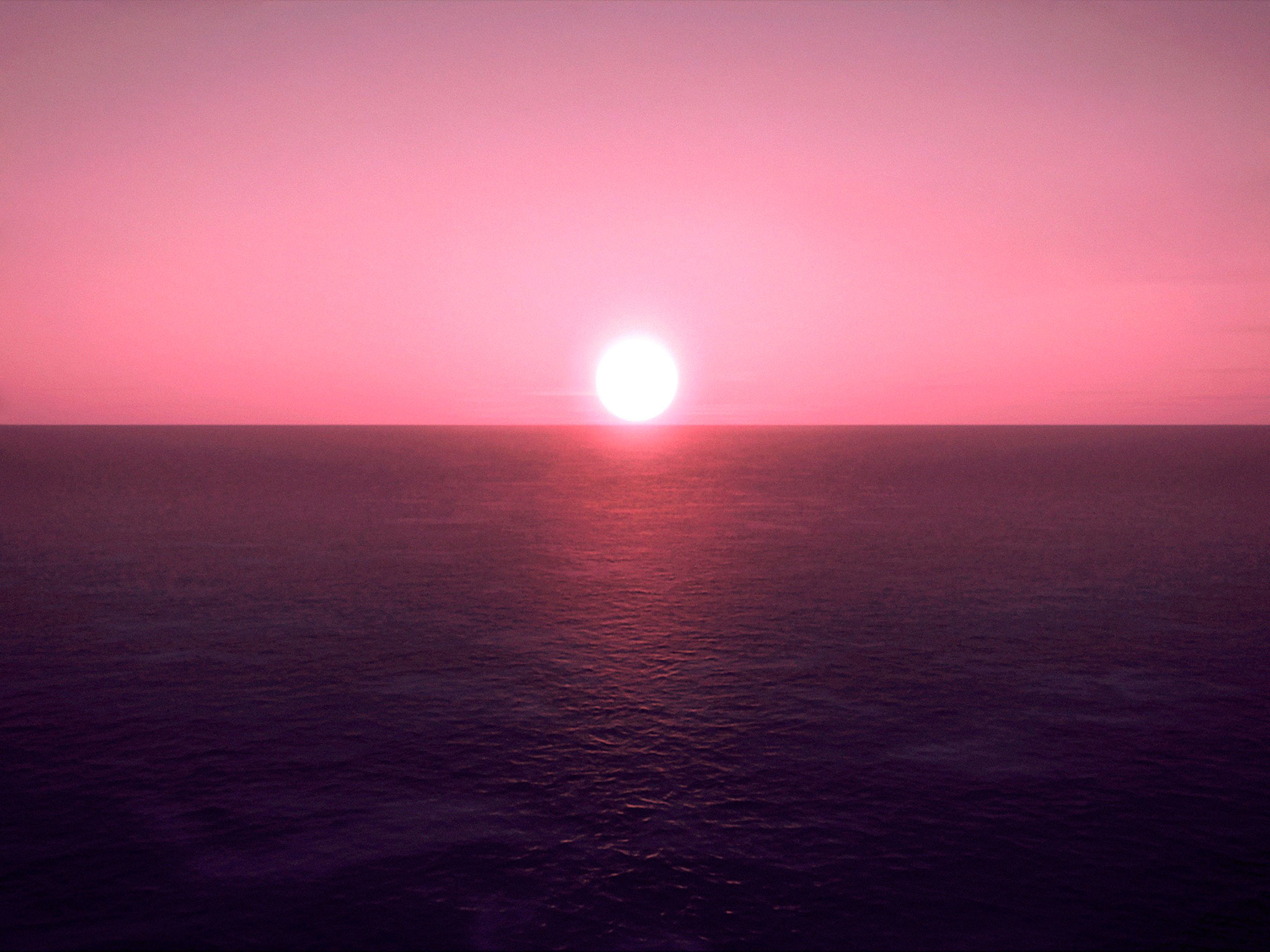
Andrea Galvani, The End (Action #5), 2015. “la Caixa” Foundation Contemporary Art Collection. Photography by Andrea Galvani Studio.
Four major sections
«Horizon and limit. Visions of the landscape" is articulated in four sections that investigate "the fiction of the landscape", "the experience of the landscape", "nature framed" and "the human impact on nature".
From romanticism we experience the desire to merge with nature, feel its energy, breathe at its rhythm. Nowadays, this desire to merge with nature is presented in new aspects.
The landscape has expanded towards new horizons with explorations of the subsoil or trips to the past, to history, and even suggestions for the future that incorporate the mobility of time. In this process, painting and photography – along with poetry – have been pioneers in the representation of landscape.
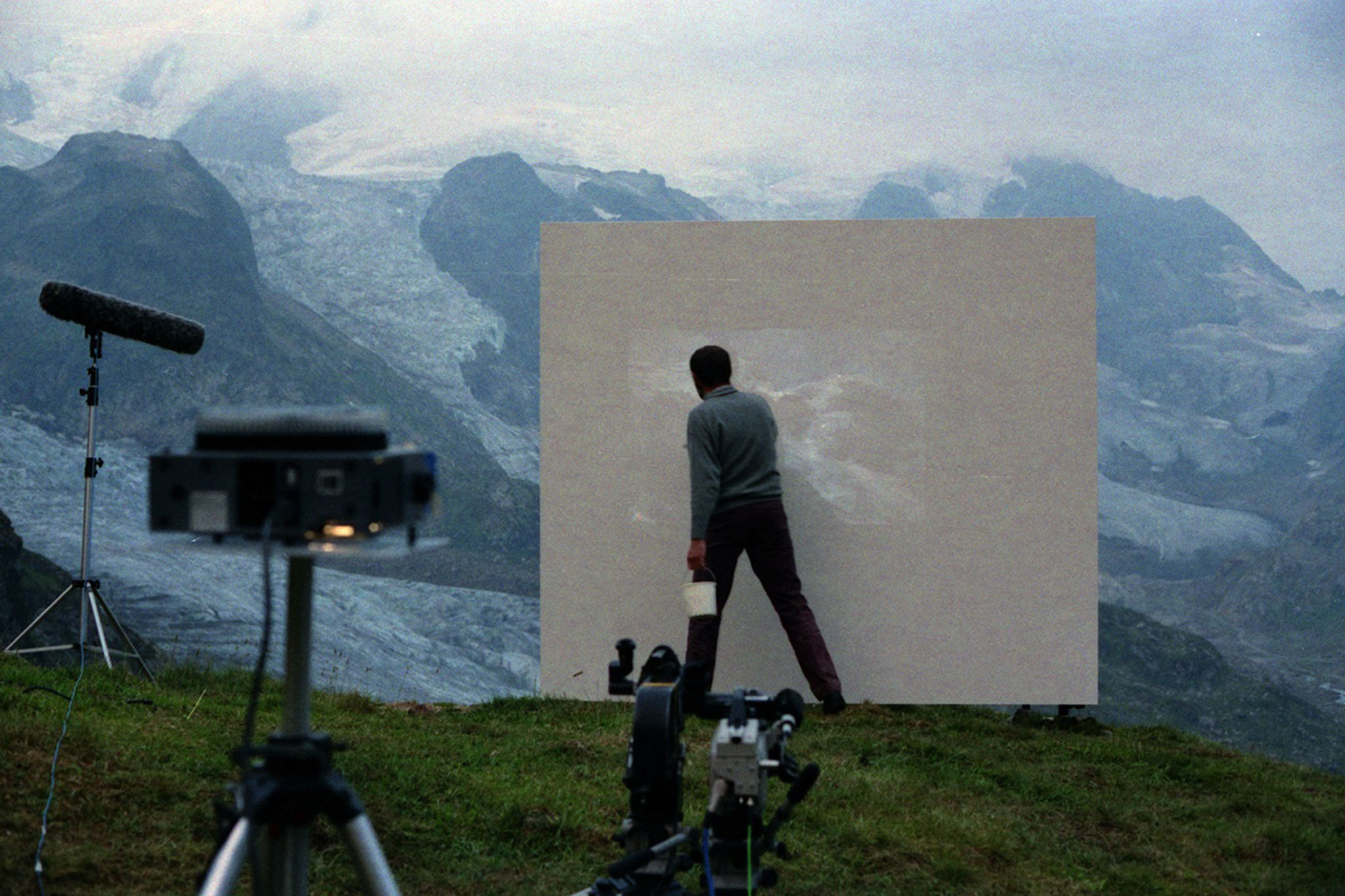
Rémy Zaugg, Projection (morning/afternoon), 1990-2019. “la Caixa” Foundation Contemporary Art Collection. Photography by Association of the Friends of Rémy Zaugg and Kunstmuseum Thun. Courtesy Mai 36 Galerie Zurich.
The tour begins with three works that bring us closer to the concepts of horizon and limit, around which the discourse of the exhibition is built.
In “Els quatre horitzons” [The four horizons], 1991, Perejaume (Sant Pol de Mar, 1957), the moldings do not delimit the space of the representation, but rather evoke different pictorial horizons.
In the 2023 work “Cloud IV” by Anne Imhof (Giessen, Germany, 1978), we contemplate the enigmatic image of a cloud painted with a palette of reds and turquoises.
In “Goldener Horizont” by Anna Talens (Carcaixent, 1978), the tumultuous landscape of romanticism is evoked. Creation, anguish and hope: three relevant themes that hover over the beginning of the exhibition.
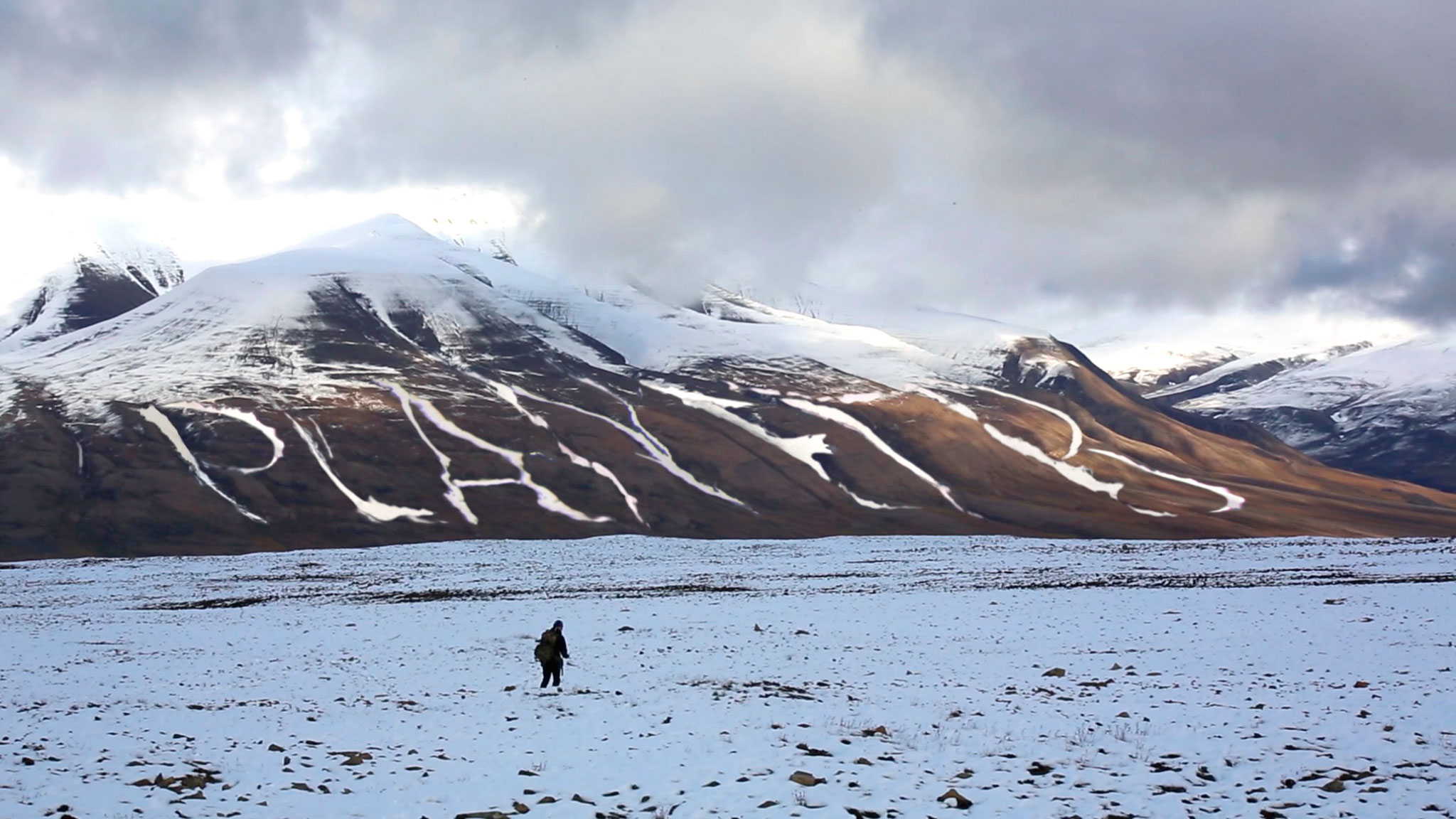
Christina Lucas. The People That Is Missing, 2019. “la Caixa” Foundation Contemporary Art Collection.
1. The fiction of the landscape
Artists of our time have at their disposal an almost infinite amount of images and ideas about the landscape that they use to create their works. They often combine romantic vision with scientific images or digital recreations.
Fernweh is a German word that describes the desire to travel, to escape and disappear from the place where one is. Tacita Dean (Canterbury, Great Britain, 1965) reveals the complexity of the relationship we establish with the natural environment, which combines representation and fantasy, reality and fiction.
Julius von Bismarck (Breisach, Germany, 1983) plays with the limits between engraving and photography to generate a visual deception. In “Landscape painting” (Quarry Day), 2021.
In 2009, Michael Najjar (Landau in der Pfalz, Germany, 1966) climbed the summit of Aconcagua, in the Argentine Andes. Over the course of the trip he took photographs that he digitally manipulated.
The last work in this section, "The problem of the three bodies" (2022), by Dionís Escorsa (Tortosa, 1970) and Albert Merino (Barcelona, 1979), reinterprets the romantic landscape The Sphinx of Roscoff.
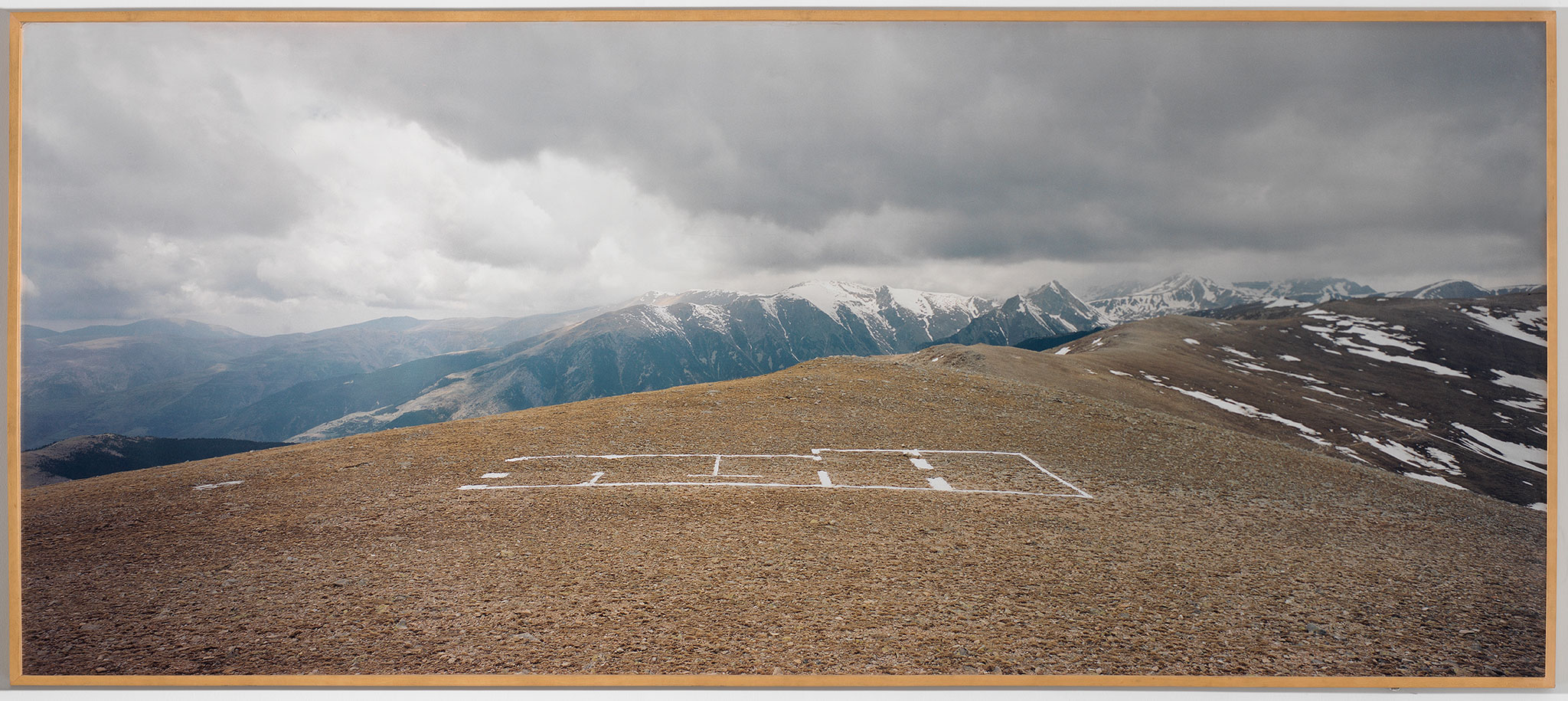
Perejaume Collado de Pal – Cima de Costabona, 1990. “la Caixa” Foundation Contemporary Art Collection. Photography by Perejaume, VEGAP, Barcelona, 2023.
2. The experience of the landscape
Who hasn't ever wanted to stop time? In The End (Action #5), from 2015, Andrea Galvani (Verona, Italy, 1973) tried to eternalize a sunset. He filmed the sun suspended over the sea with a camera attached to a supersonic plane traveling at 1,700 km/h in the opposite direction to the Earth's rotation.
The sunset is one of the most popular images and the one that has been sent and shared the most through postcards, a genre of representation that Oriol Vilanova (Manresa, 1980) has turned into the center of a reflection on images and values. In his installation Sunsets from..., from 2012, he brings together almost a thousand views of the sun turning idyllic landscapes red.
As in the case of Perejaume, walks are part of the artistic practice of Hamish Fulton (London, United Kingdom, 1946). For this exhibition, a series of pieces have been selected that reflect different excursions through the Picos de Europa, the Pyrenees and Mulhacén between 1984 and 2016.
In “Mount & Landslide,” from 2020, Patricia Dauder (Barcelona, 1973) takes as a starting point the effects of the underwater volcanic eruption of 1957 on the landscape and the lives of the inhabitants of a island of the Azores.
Along with images of nature, contemporary art also incorporates sound. In his work, Marcus Maeder (Zürich, Switzerland, 1971) gives a primary place to the acoustic representation of nature.
This section closes with L’Écho (2003). Su-Mei Tse (Luxembourg, 1973) plays the cello in front of a mountain canyon. He makes the instrument sound, stops waiting for the echo that nature sends back to him and responds with another musical phrase.
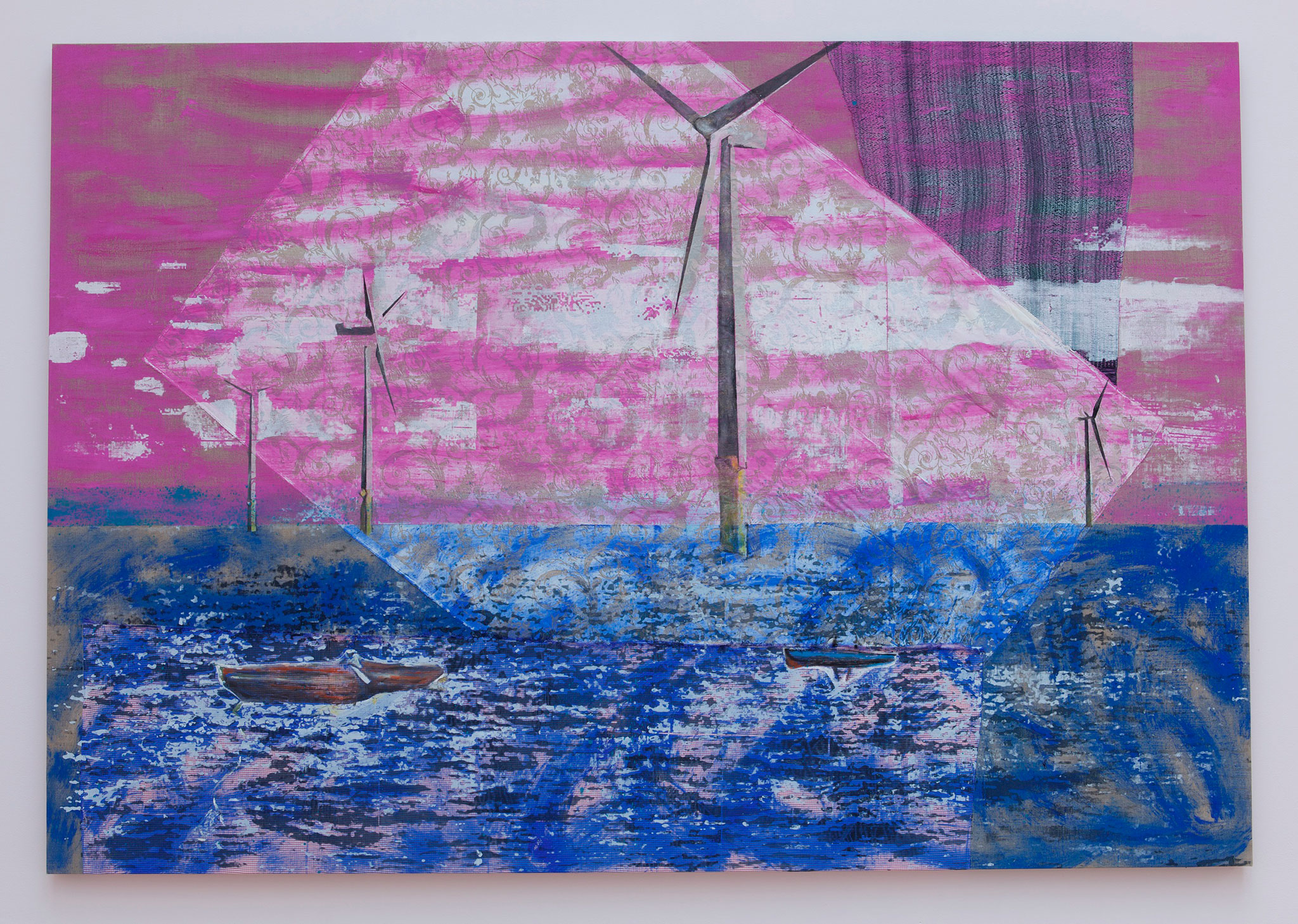
Shezad Dawood, Gwynt y Môr, 2018. Acrylic painting on vintage fabric and textile. Courtesy of the artist and The Ryder Projects, Madrid. Photography by Shezad Dawood, VEGAP, Barcelona, 2023.
3. Nature framed
Miquel Barceló (Felanitx, 1957) crossed the arid landscape of the Sahara Desert, when he traveled to Mali for the first time in 1988. He felt inspired by a radical iconography and material in which monochromatic tones predominate, converting the desolation of this landscape without horizon in a space of materiality for painting.
Far from the romantic notion of landscape, Joan Hernández Pijuan (Barcelona, 1931-2005) paints in “Solcs amb llum d’argent” [Furrows with silver light] an abstraction of the landscape accentuated by monochrome.
In “Atando el cielo”, by Victoria Civera (Port de Sagunt, 1955) from 1997, the circle delimits a sky, while a white line that acts as a horizon separates it from what could be the earth.
"Spiral Forest and Gimbal" is a 16 mm film made by Daniel Steegmann Mangrané (Barcelona, 1977). The filming was programmed so that the camera rolled in a location in the tropical forest of the Atlantic Forest of Brazil while rotating continuously, just as than our planet.
The work by Carlos Irijalba (Pamplona, 1979) Pannotia (Ribera), from 2021, refers to a supercontinent that existed until 540 million years ago.
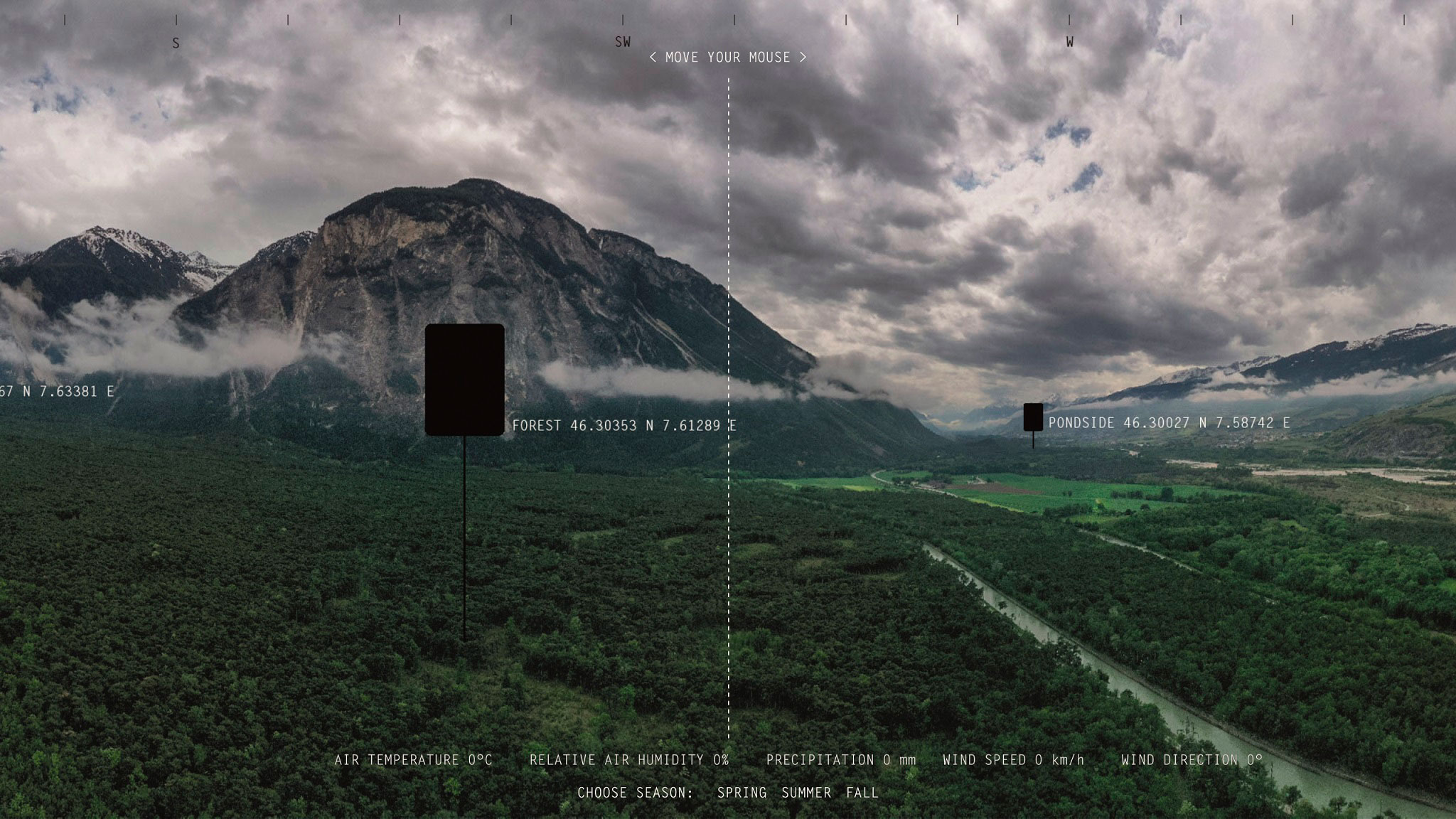
Marcus Maeder, Perimeter Pfynwald, 2018-2023. Photography by Marcus Maeder, VEGAP, Barcelona, 2023.
4. Human impact on nature
The economic and social imprint on the landscape is presented with, "Desert Trails" (2012), by Xavier Ribas (Barcelona, 1960), is a composition of 33 photographs of the Atacama Desert, in Chile, an environment in which different historical times overlap. Ribas completes the set with an isolated photograph of the former headquarters of the Union of Railway Workers Council of Santiago, which adds a reference to the conflicts of extractive colonialism.
The approach to war landscapes is reflected with Bleda & Rosa (Castellón, 1968 / Albacete, 1970) or the two pieces by Sophie Ristelhueber (Paris, France, 1949) that belong to the “Fait” series, made up of 71 photographs taken in Kuwait after the end of the Gulf War.
Andreas Gursky and Shezad Dawood show the other side of renewable energy, portraying the green hills of a landscape covered by countless rows of solar panels.
The exhibition ends with a series of works that speculate on the future. “Nursery,” from 2020, shows a laboratory with hydroponic cultivation. Thomas Demand (Munich, Germany, 1974) has created this image following a common method in his work: he builds paper models based on real scenes and, later, photographs them. "The People That Is Missing" (2019), by Cristina Lucas is a video in the Svalbard archipelago, in the Arctic Circle, a place where climate change is very evident.
"Horizon and limit Visions of the landscape" was curated by Nimfa Bisbe and Arola Valls, and has had the collaboration of numerous artists who, together with institutions and collectors, have donated their works to facilitate this dialogue.

Andrea Galvani, The End (Action #5), 2015. “la Caixa” Foundation Contemporary Art Collection. Photography by Andrea Galvani Studio.
Four major sections
«Horizon and limit. Visions of the landscape" is articulated in four sections that investigate "the fiction of the landscape", "the experience of the landscape", "nature framed" and "the human impact on nature".
From romanticism we experience the desire to merge with nature, feel its energy, breathe at its rhythm. Nowadays, this desire to merge with nature is presented in new aspects.
The landscape has expanded towards new horizons with explorations of the subsoil or trips to the past, to history, and even suggestions for the future that incorporate the mobility of time. In this process, painting and photography – along with poetry – have been pioneers in the representation of landscape.

Rémy Zaugg, Projection (morning/afternoon), 1990-2019. “la Caixa” Foundation Contemporary Art Collection. Photography by Association of the Friends of Rémy Zaugg and Kunstmuseum Thun. Courtesy Mai 36 Galerie Zurich.
The tour begins with three works that bring us closer to the concepts of horizon and limit, around which the discourse of the exhibition is built.
In “Els quatre horitzons” [The four horizons], 1991, Perejaume (Sant Pol de Mar, 1957), the moldings do not delimit the space of the representation, but rather evoke different pictorial horizons.
In the 2023 work “Cloud IV” by Anne Imhof (Giessen, Germany, 1978), we contemplate the enigmatic image of a cloud painted with a palette of reds and turquoises.
In “Goldener Horizont” by Anna Talens (Carcaixent, 1978), the tumultuous landscape of romanticism is evoked. Creation, anguish and hope: three relevant themes that hover over the beginning of the exhibition.

Christina Lucas. The People That Is Missing, 2019. “la Caixa” Foundation Contemporary Art Collection.
1. The fiction of the landscape
Artists of our time have at their disposal an almost infinite amount of images and ideas about the landscape that they use to create their works. They often combine romantic vision with scientific images or digital recreations.
Fernweh is a German word that describes the desire to travel, to escape and disappear from the place where one is. Tacita Dean (Canterbury, Great Britain, 1965) reveals the complexity of the relationship we establish with the natural environment, which combines representation and fantasy, reality and fiction.
Julius von Bismarck (Breisach, Germany, 1983) plays with the limits between engraving and photography to generate a visual deception. In “Landscape painting” (Quarry Day), 2021.
In 2009, Michael Najjar (Landau in der Pfalz, Germany, 1966) climbed the summit of Aconcagua, in the Argentine Andes. Over the course of the trip he took photographs that he digitally manipulated.
The last work in this section, "The problem of the three bodies" (2022), by Dionís Escorsa (Tortosa, 1970) and Albert Merino (Barcelona, 1979), reinterprets the romantic landscape The Sphinx of Roscoff.

Perejaume Collado de Pal – Cima de Costabona, 1990. “la Caixa” Foundation Contemporary Art Collection. Photography by Perejaume, VEGAP, Barcelona, 2023.
2. The experience of the landscape
Who hasn't ever wanted to stop time? In The End (Action #5), from 2015, Andrea Galvani (Verona, Italy, 1973) tried to eternalize a sunset. He filmed the sun suspended over the sea with a camera attached to a supersonic plane traveling at 1,700 km/h in the opposite direction to the Earth's rotation.
The sunset is one of the most popular images and the one that has been sent and shared the most through postcards, a genre of representation that Oriol Vilanova (Manresa, 1980) has turned into the center of a reflection on images and values. In his installation Sunsets from..., from 2012, he brings together almost a thousand views of the sun turning idyllic landscapes red.
As in the case of Perejaume, walks are part of the artistic practice of Hamish Fulton (London, United Kingdom, 1946). For this exhibition, a series of pieces have been selected that reflect different excursions through the Picos de Europa, the Pyrenees and Mulhacén between 1984 and 2016.
In “Mount & Landslide,” from 2020, Patricia Dauder (Barcelona, 1973) takes as a starting point the effects of the underwater volcanic eruption of 1957 on the landscape and the lives of the inhabitants of a island of the Azores.
Along with images of nature, contemporary art also incorporates sound. In his work, Marcus Maeder (Zürich, Switzerland, 1971) gives a primary place to the acoustic representation of nature.
This section closes with L’Écho (2003). Su-Mei Tse (Luxembourg, 1973) plays the cello in front of a mountain canyon. He makes the instrument sound, stops waiting for the echo that nature sends back to him and responds with another musical phrase.

Shezad Dawood, Gwynt y Môr, 2018. Acrylic painting on vintage fabric and textile. Courtesy of the artist and The Ryder Projects, Madrid. Photography by Shezad Dawood, VEGAP, Barcelona, 2023.
3. Nature framed
Miquel Barceló (Felanitx, 1957) crossed the arid landscape of the Sahara Desert, when he traveled to Mali for the first time in 1988. He felt inspired by a radical iconography and material in which monochromatic tones predominate, converting the desolation of this landscape without horizon in a space of materiality for painting.
Far from the romantic notion of landscape, Joan Hernández Pijuan (Barcelona, 1931-2005) paints in “Solcs amb llum d’argent” [Furrows with silver light] an abstraction of the landscape accentuated by monochrome.
In “Atando el cielo”, by Victoria Civera (Port de Sagunt, 1955) from 1997, the circle delimits a sky, while a white line that acts as a horizon separates it from what could be the earth.
"Spiral Forest and Gimbal" is a 16 mm film made by Daniel Steegmann Mangrané (Barcelona, 1977). The filming was programmed so that the camera rolled in a location in the tropical forest of the Atlantic Forest of Brazil while rotating continuously, just as than our planet.
The work by Carlos Irijalba (Pamplona, 1979) Pannotia (Ribera), from 2021, refers to a supercontinent that existed until 540 million years ago.

Marcus Maeder, Perimeter Pfynwald, 2018-2023. Photography by Marcus Maeder, VEGAP, Barcelona, 2023.
4. Human impact on nature
The economic and social imprint on the landscape is presented with, "Desert Trails" (2012), by Xavier Ribas (Barcelona, 1960), is a composition of 33 photographs of the Atacama Desert, in Chile, an environment in which different historical times overlap. Ribas completes the set with an isolated photograph of the former headquarters of the Union of Railway Workers Council of Santiago, which adds a reference to the conflicts of extractive colonialism.
The approach to war landscapes is reflected with Bleda & Rosa (Castellón, 1968 / Albacete, 1970) or the two pieces by Sophie Ristelhueber (Paris, France, 1949) that belong to the “Fait” series, made up of 71 photographs taken in Kuwait after the end of the Gulf War.
Andreas Gursky and Shezad Dawood show the other side of renewable energy, portraying the green hills of a landscape covered by countless rows of solar panels.
The exhibition ends with a series of works that speculate on the future. “Nursery,” from 2020, shows a laboratory with hydroponic cultivation. Thomas Demand (Munich, Germany, 1974) has created this image following a common method in his work: he builds paper models based on real scenes and, later, photographs them. "The People That Is Missing" (2019), by Cristina Lucas is a video in the Svalbard archipelago, in the Arctic Circle, a place where climate change is very evident.

































